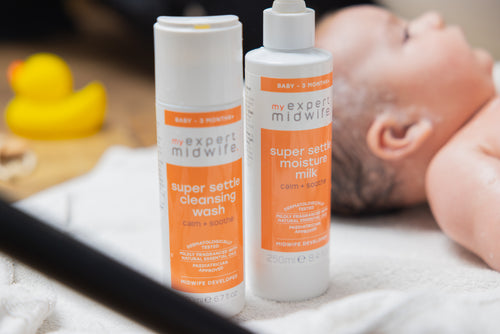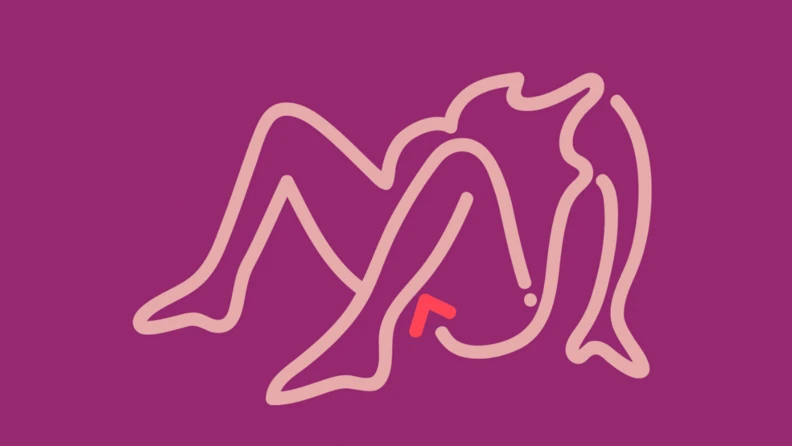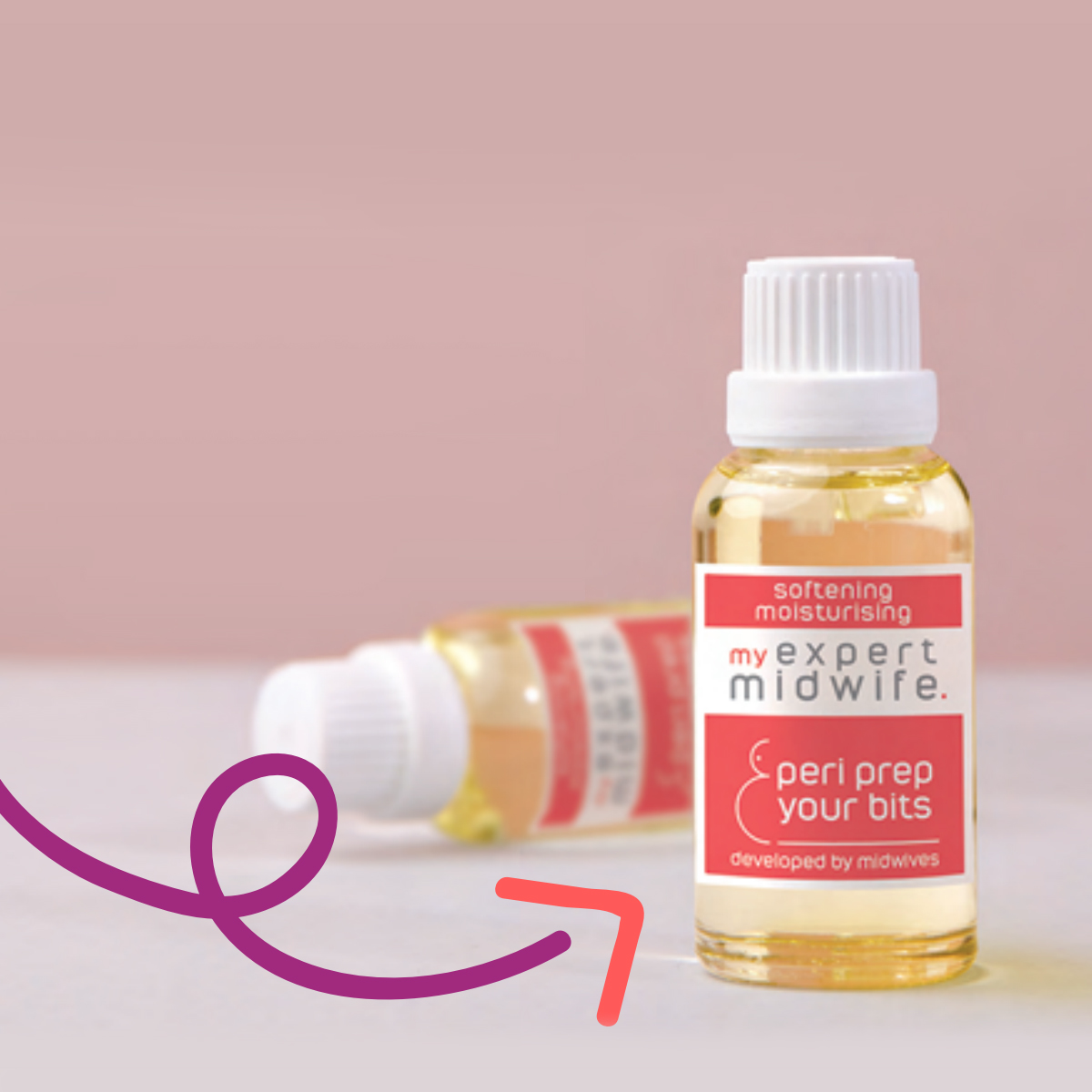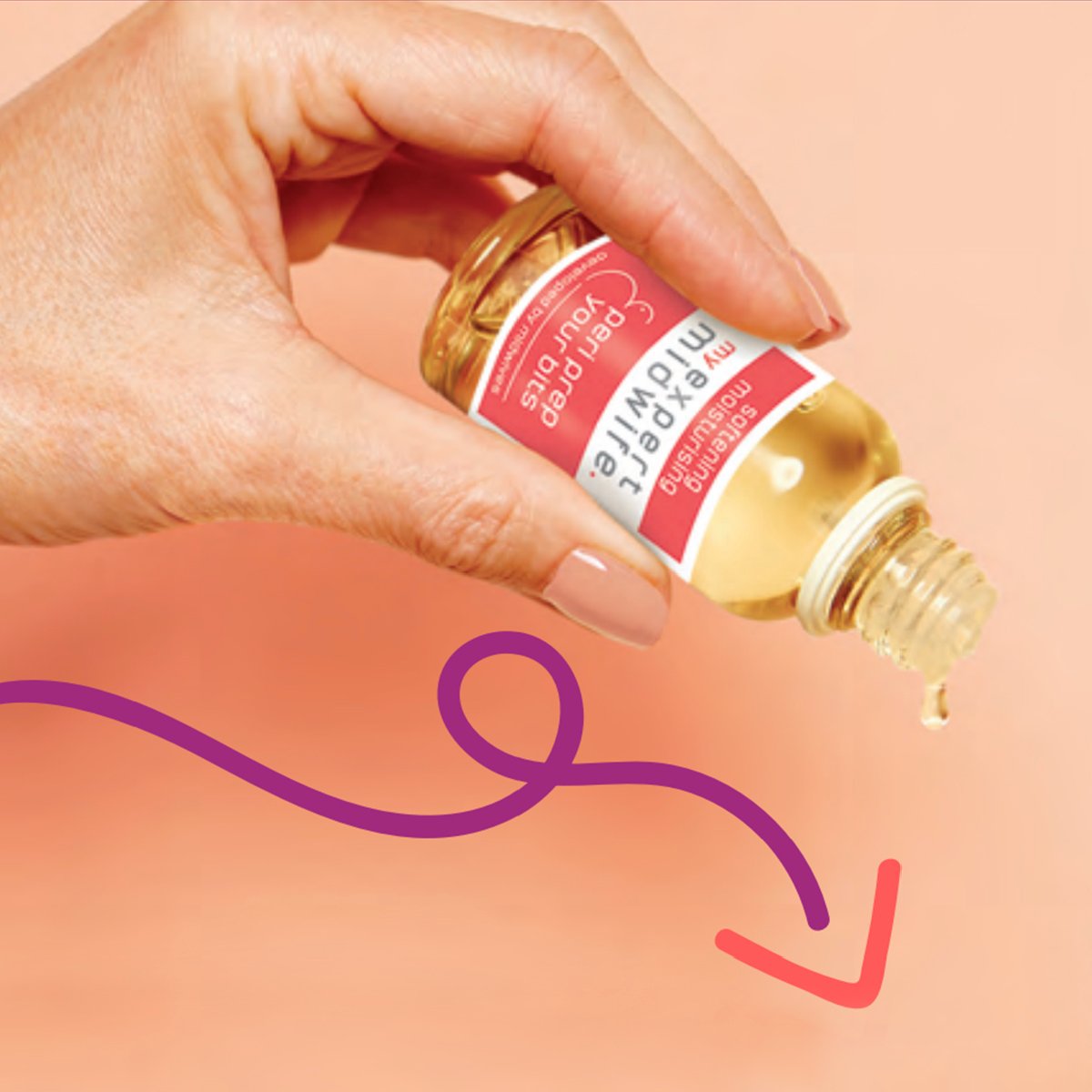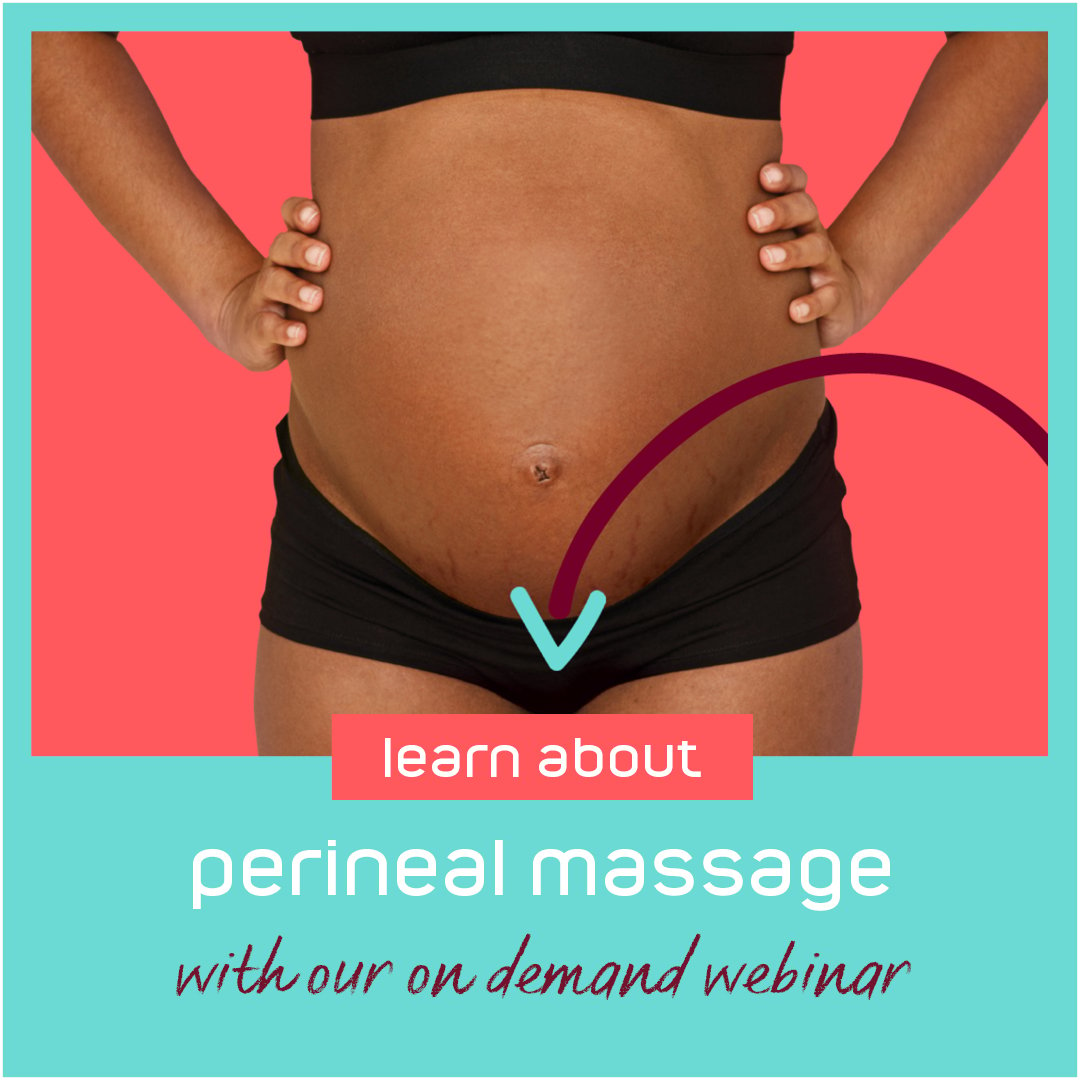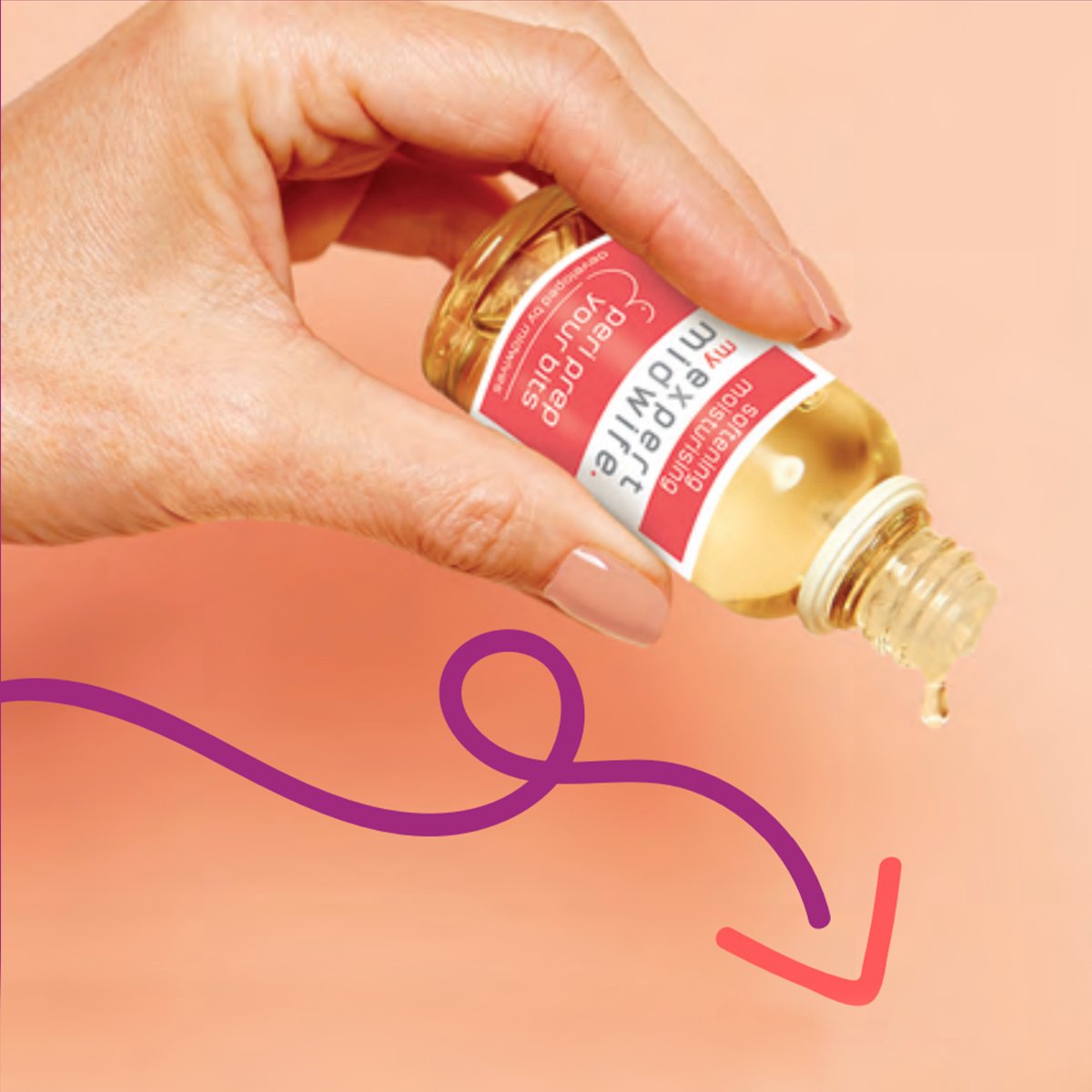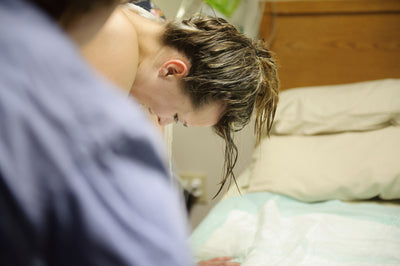85% of women will sustain perineal trauma during vaginal birth. This guide will teach you how to do perineal massage to help reduce the risk of tearing. Plus, we'll answer all your questions about the benefits of perineal massage, how often to do it and when to start doing it.
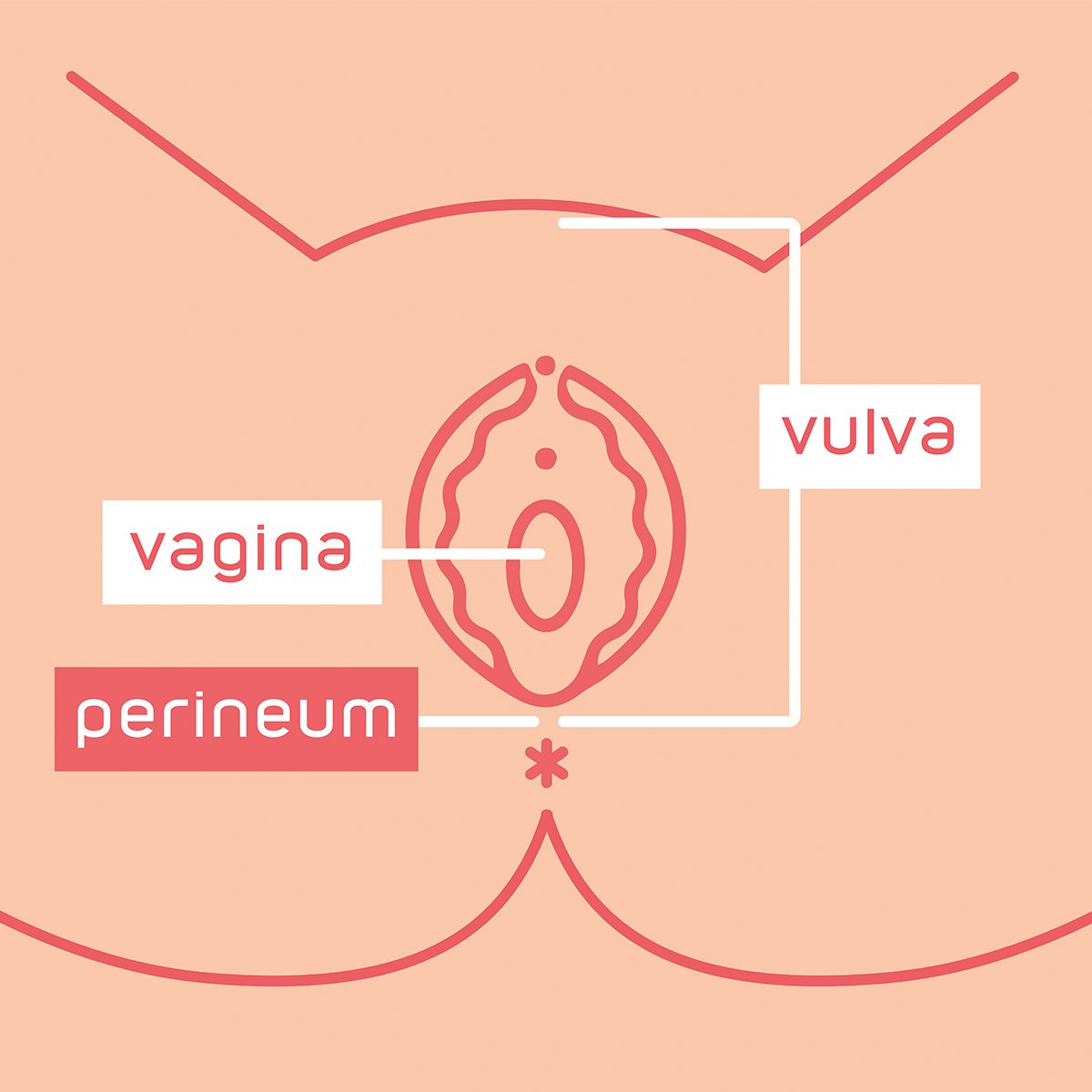
What is a perineal massage?
A perineal massage focuses on the perineum - the area between the vaginal opening and the anus - with the aim of stretching the perineum and making it more elastic to reduce the risk of tearing during childbirth.
Why you should try perineal massage
Research shows that during birth, around 9 out of 10 first-time mums and 7 out of 10 mums having subsequent births will have some form of damage to their perineum, such as tearing.
Performing regular perineal massage from week 35 of pregnancy is proven to encourage the skin and muscles around the perineum to stretch more easily during childbirth, reducing the severity of tearing or the need for an episiotomy - a cut made to the perineum to widen the vaginal opening for the baby to be born.
To help encourage the skin around your perineum to stretch more easily during childbirth, our expert midwives have developed an award-winning perineal massage oil called Peri Prep Your Bits. It contains a unique blend of essential oils to help nourish, protect, and promote skin elasticity. When you buy Peri Prep Your Bits, you also get access to free perineal massage webinar hosted by an expert registered midwife.
Learning how to stretch the perineum through perineal massage gives you the best chance of a better birth experience and a smoother recovery. So, let's delve into how to do it.
How to do perineal massage
- We recommended performing perineal massage from 35 weeks of pregnancy, 3-4 times a week for 3-4 minutes
- Perineal massage is best avoided if you have a known vaginal infection, thrush or genital herpes
Watch our video guide below or read on to learn how to do perineal massage by yourself or with a partner to prepare your perineum for childbirth.
1. Find A Perineal Massage Oil
First, find a perineal massage oil. You can use our midwife developed Peri Prep Your Bits or a food oil, such as almond oil.
2. Get Into Position
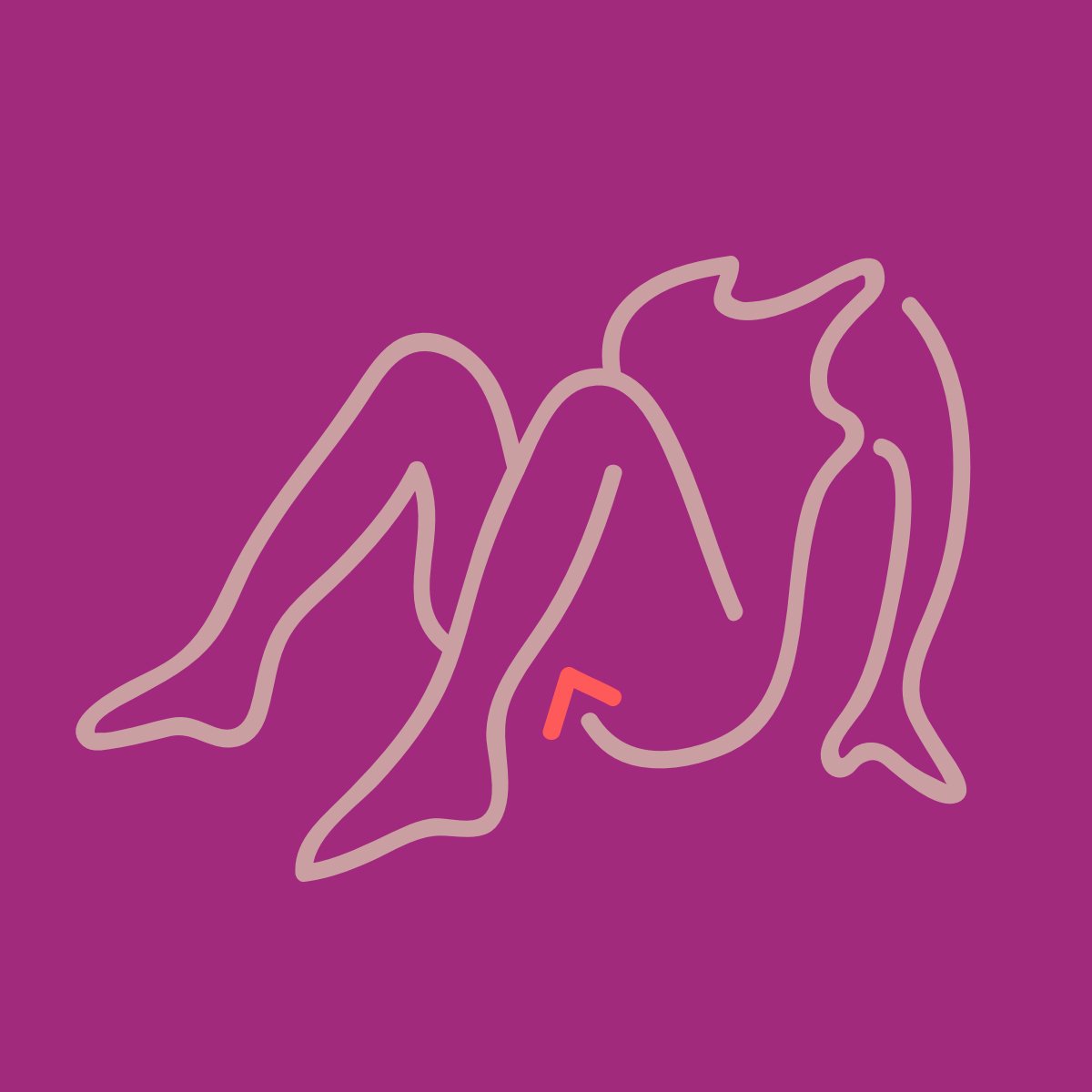
After washing your hands, sit comfortably, bring your knees together and towards your chest and then open your knees like a book. Or you may find it easier to put one foot on the toilet / bath / stool in a similar way to how you would insert a tampon.
3. Apply The Perineal Oil
Put a small amount of the massage oil on your perineum to make the massage more comfortable. Discontinue use if irritation occurs.
4. Gently Stretch Your Perineum
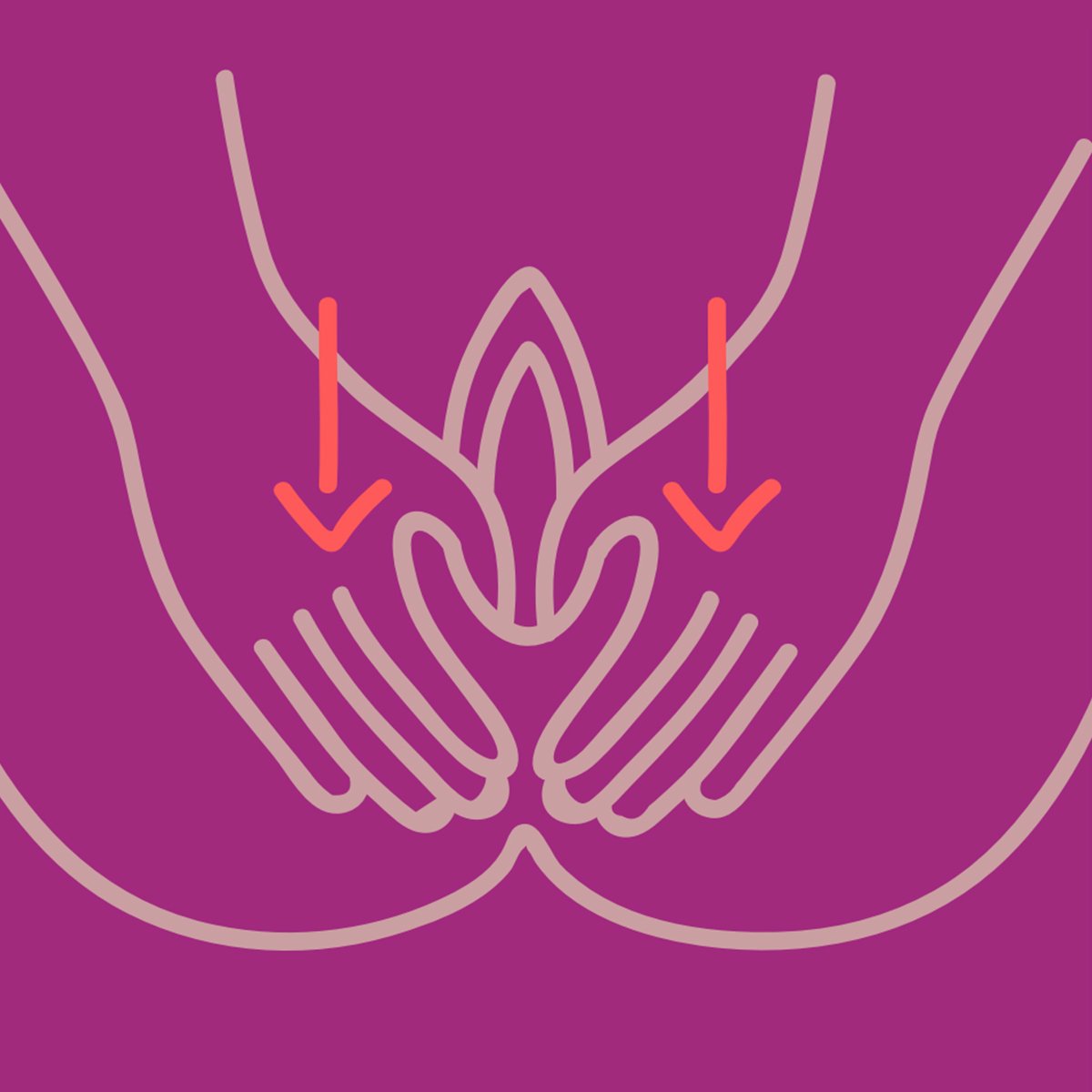
Using your thumbs, insert them into your vagina and then place your forefingers on the skin of your perineum
You now need to stretch this skin gently by pressing downwards towards your anus and to the sides until you feel a slight burning, stretching sensation. Hold the stretch for 1 to 2 minutes.
5. Massage In A U-shape
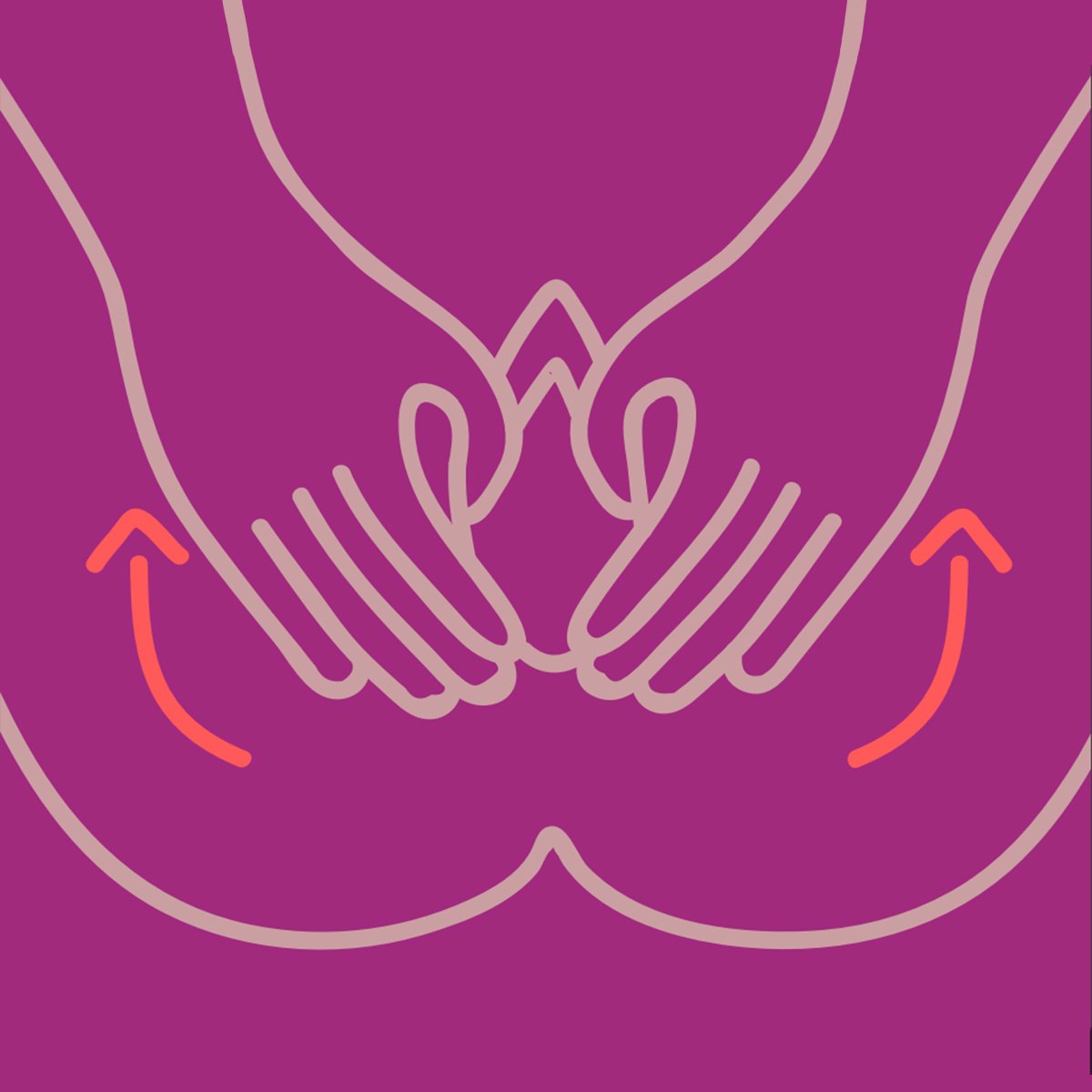
Massage the area between your thumb and fingers upwards and outwards and back again in a shape.
6. Learn From Real Midwives
On our perineal massage webinar, you'll learn from an expert registered midwife how to perform a perineal massage and how to protect your perineum during labour.
How A Partner Can Help With Perineal Massage
As your pregnancy progresses you may find it easier to invite your partner to perform the massage for you. Perineal massage should not be painful and, with time and practice, should become effortless.
Follow these steps along with your partner.
7. Explain The Benefits To Your Partner
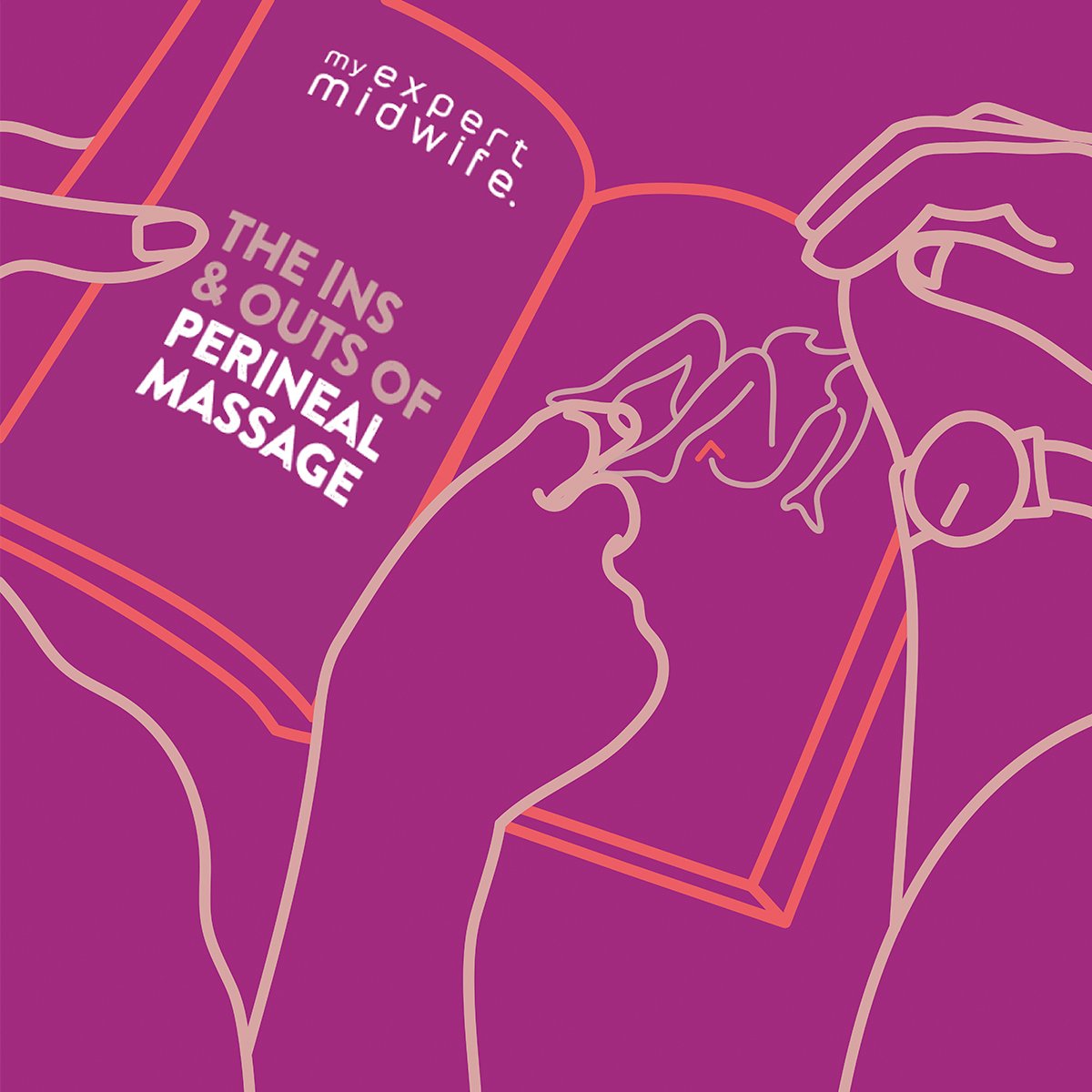
Explain perineal massage in detail to your partner before commencing so they understand the method required, why you are doing it and how often it needs to be done. You may find it easier to download and print our printable perineal massage guide here
8. Make Your Environment Comfortable

Prepare to be as comfortable and relaxed as possible. This may mean adapting your environment by dimming the lights and using pillows or cushions for support.
9. Get Into Position
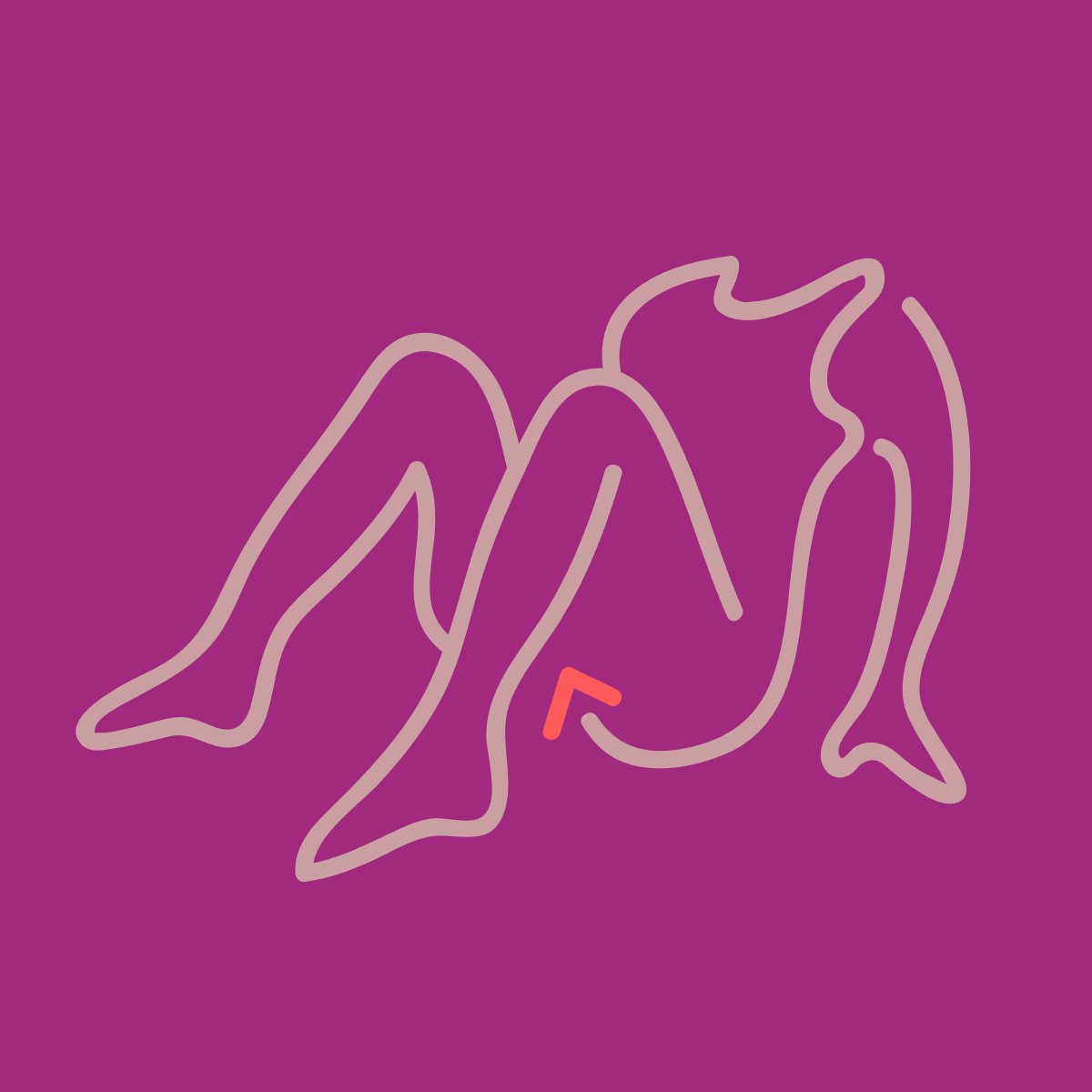
The easiest position for a partner to perform perineal massage is probably with you in a semi-upright position on a bed or sofa. It's fine to also try lying on one side.
10. Apply Oil To Your Perineum
Once comfortable, apply Peri Prep Your Bits perineal massage oil on the patch of skin between your vagina and anus (your perineum).
11. Your Partner Can Start Gently
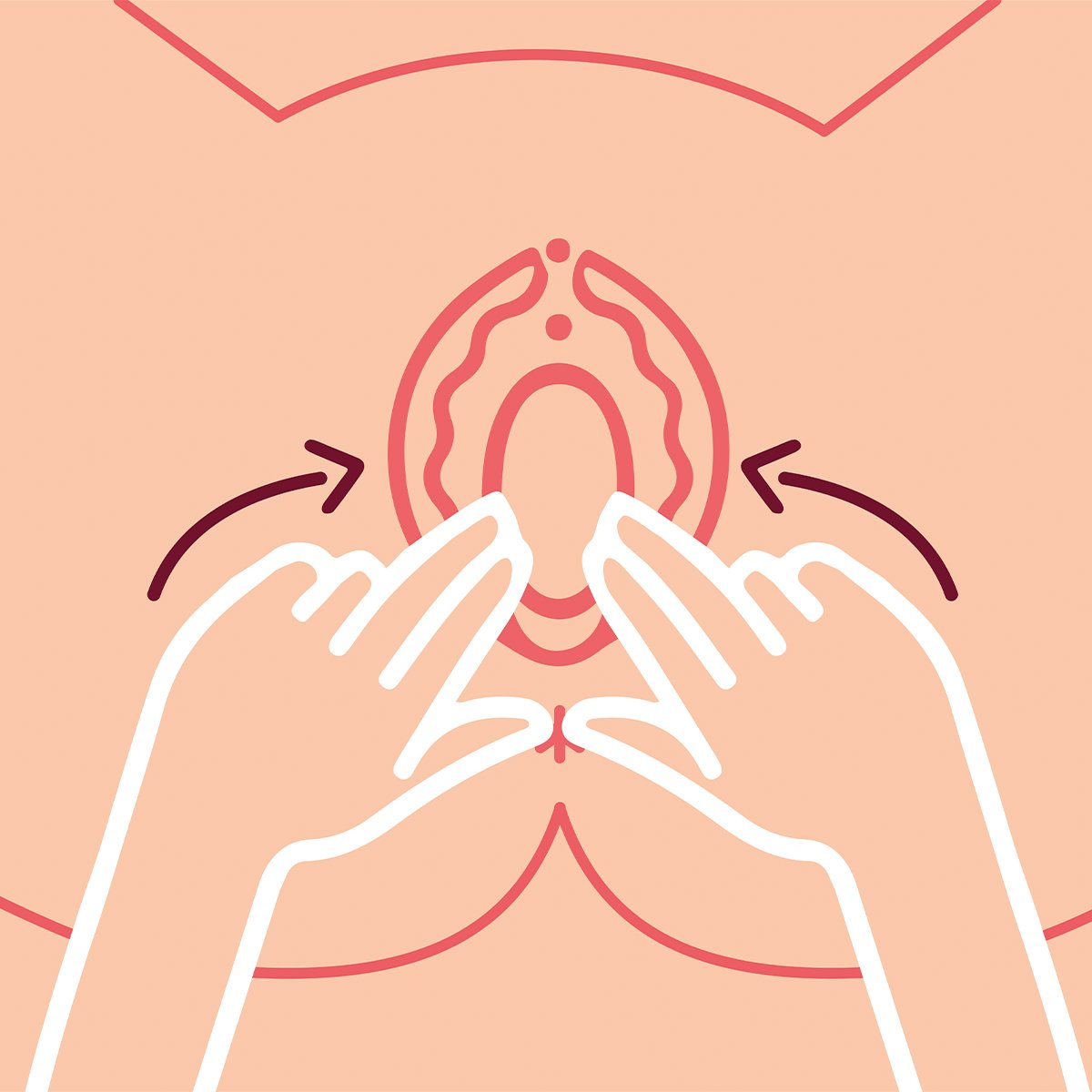
Using both hands, your partner should gently insert their index finger and middle finger on either side into the vagina, up to about the second knuckle. Try starting with just the index fingers of each hand and move on to using two fingers once you feel comfortable.
Your partner may find it easiest to use their fingers rather than their thumbs but try both to see what works best for you.
12. Massage In A U-shape
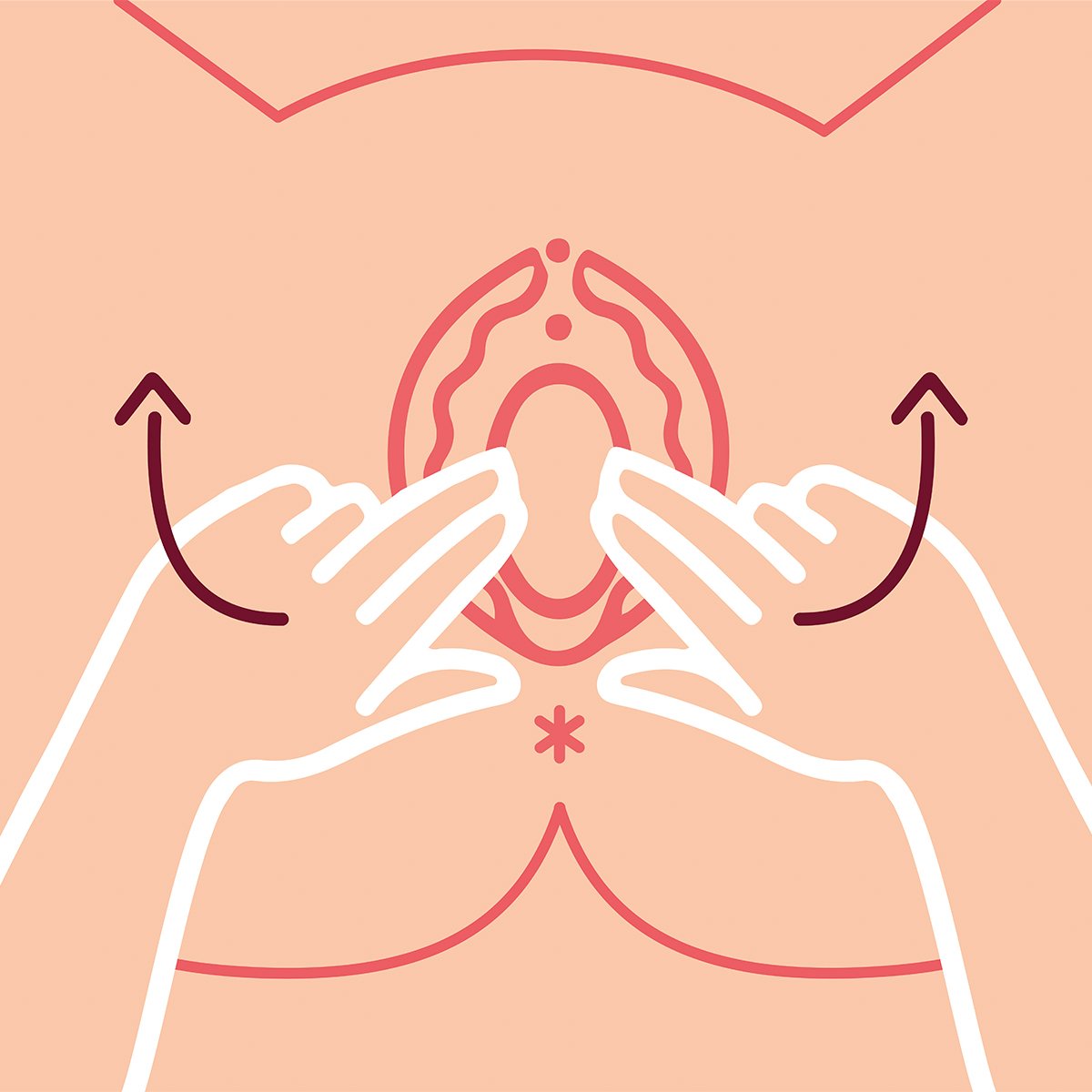
Your partner needs to move their fingers in a shape for a few minutes, whilst you guide them as to what feels comfortable and when to start and stop
More tips for protecting your perineum during birth
Here are some things you can do to reduce the extent of tearing in childbirth:
Avoid active pushing or the 'Valsalva' manoeuvre
This is where you hold your breath and push during the pushing stage of labour. Push when you get the urge and avoid holding your breath. Hypnobirthing techniques are good to help you learn how to breathe your baby down, especially as their head crowns.
Give birth in any position other than on your back
Upright positions are advisable but, if you are on the bed, lying on your left or right side are good positions, too.
Apply a warm compress to the perineum during labour
Evidence from research shows that warming up the perineum during birth dilates the blood vessels and hydrates the skin, making the perineum less likely to tear.
Final takeaway
Perineal massage during pregnancy, when undertaken from 34 - 35 weeks, has been proven by research to reduce the extent of deep and superficial perineal tearing, particularly in women having their first vaginal births. It has also been shown to reduce the amount of discomfort felt by women who are having a second or subsequent baby 3 months after their birth.
You can massage your perineum yourself or invite your partner to do it. Watch our animated video and sign up for our webinar to learn even more about this essential preparation for your birth.
